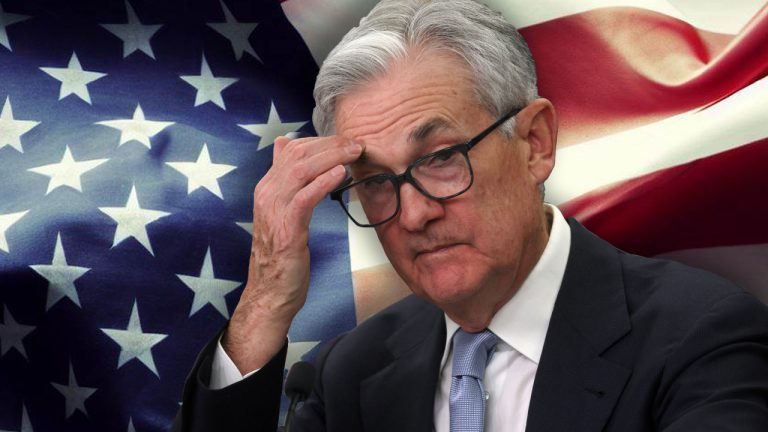
Bitcoin network fundamentals have never looked better, as optimism trickles back when it comes to BTC price strength in a key Fed rate decision week.
Bitcoin (BTC) starts the new week with optimism as traders greet the first green weekly candle in over a month.
BTC price strength appears to be gradually improving after a weak August and start of September, with BTC/USD climbing toward $27,000.
A solid weekly close provides the backdrop to what promises to be an interesting few days, which will include a key United States macroeconomic event as a potential volatility driver.
The U.S. Federal Reserve will meet to decide on interest rate policy, and any surprises could have significant repercussions for risk assets, including crypto.
Elsewhere, things are looking promising for Bitcoin, with network fundamentals set to surge higher to new records.
Strength “under the hood” is similarly being reflected in hodler behavior, with wallet numbers continuing to shoot higher regardless of BTC price action.
Cointelegraph takes a look at these topics and more as Bitcoin begins what is likely its most eagerly-awaited week of September.
Trader eyes BTC price “local bottom”
Bitcoin offered little volatility over the weekend, but calmer trading conditions are already being challenged into the new week, data from Cointelegraph Markets Pro and TradingView shows.
The Sept. 17 weekly close soon gave way to upside volatility, and at the time of writing, bulls are attempting to build on that foundation to crack new month-to-date highs.

Popular trader Credible Crypto thus suggested that the weekend zone could well form a “local bottom.”
“This region continues to be defended, with buyers stepping in here once again. Has the makings of a local bottom/base being formed imo,” he told X (formerly Twitter) subscribers overnight, alongside a chart of order book liquidity on the largest global exchange, Binance.
“I think we probs push back up to 27k+ soon.”

A prior post noted the lack of promise in shorting at weekend levels, with bid liquidity improving.
The weekly close meanwhile excited Michaël van de Poppe, founder and CEO of trading firm Eight, who saw key support holding at the 200-week exponential moving average (EMA).
“Bitcoin is closing above the 200-Week EMA, which is vital for bullish continuation,” he explained.
“Next week we should continue to do so and price starts to look similar to the 2015/2016 cycle.”
Van de Poppe uploaded a chart showing the interplay between the spot price and the 200-week EMA, currently at $25,700, since 2020.
“Markets are consolidating with a weekly close strongly above the 200-Week EMA for Bitcoin. The chances of the correction to be finished are increasing day by day,” he added in a separate post.

Some are staying sober on the outlook for Bitcoin into 2024. Among them is popular trader and analyst Rekt Capital, who continues to eye the potential for a bearish double-top pattern to play out on weekly timeframes.
“Make no mistake - Bitcoin is in an early stage Bull Market,” he wrote in part of weekend X analysis.
“Long-term the outlook is bullish. Mid-term? Over the next 7 months, we may or may not get 1 last major correction. Will it happen? It would be wise to at least be ready for it if it does.”

FOMC volatility due with rate pause odds at 99%
This week, the word on everyone’s lips is FOMC — the Federal Open Market Committee — which will meet to decide on interest rates going forward.
If history is a guide, the Sept. 20 decision will induce at least some form of volatility across risk assets, with Bitcoin and crypto no exception.
The landscape surrounding the latest FOMC meeting is mixed, with last week’s macro data showing inflation beating expectations, yet markets overwhelmingly believe that the Fed will not raise rates further to combat it.
According to CME Group’s FedWatch Tool, the odds of rates remaining unchanged are almost unanimous.

This could reduce the impact of the FOMC event, but conversely, a curveball decision that goes against market appraisals would be felt all the more keenly.
“This week sets up the rest of 2023,” financial commentary resource The Kobeissi Letter summarized while highlighting upcoming macro data releases and more.
“Fed guidance on Wednesday sets the tone for the next few meetings. Expect to see lots of volatility this week.”
Key Events This Week:
— The Kobeissi Letter (@KobeissiLetter) September 17, 2023
1. Building Permits data - Tuesday
2. Housing Starts data - Tuesday
3. Fed Interest Rate Decision - Wednesday
4. Fed Press Conference - Wednesday
5. Jobless Claims - Thursday
6. Existing Home Sales data - Thursday
This week sets up the rest of 2023.
Explaining the likely outcome of FOMC, crypto and macro insight resource Ecoinometrics suggested that the market odds were no surprise based on Fed signals.
“There will be no rate hike at the FOMC meeting on September 20. That’s what the Fed Funds futures are pricing,” it wrote at the weekend.
“And actually they have been very consistent about that for a long time now. The fact that the latest inflation numbers aren’t exactly going in the right direction didn’t change anything to that.”

An accompanying chart added that the market “never had doubts” about what would happen in September.
Difficulty, hash rate return to new records
Back to Bitcoin and a return to the “up only” style of fundamental growth is set to characterize the coming week.
Mining difficulty, which dipped 2.65% at its last automated readjustment two weeks ago, will cancel out its losses on Sept. 19.
The latest estimates from BTC.com suggest that difficulty will increase by a solid 4.6% — taking it to new all-time highs in the process.

2023 has seen a broad uptrend in difficulty challenged only briefly, even as spot price action delivered more challenging conditions.
The story is the same for hash rate — the estimated processing power deployed by miners — which continues to set new records of its own.
A conspicuous spike into the new week has become a talking point in its own right, with optimism increasing among commentators as a result.
Who is responsible for the hashrate jumping up almost 20%? Who do you think?
— Bitcoin Bootcamp (@BTCbootcamp) September 17, 2023
This is surreal.#btc #Bitcoin pic.twitter.com/paIwb57DNm
“The bitcoin network hashrate is at an all time high,” Nicholas Cary, co-founder of Bitcoin data resource Blockchain.com, noted earlier this month.
“What does this mean? The difficulty is a measure of how difficult it is to mine a Bitcoin block, or in more technical terms, to find a hash below a given target. A high difficulty means that it will take more computing power to mine the same number of blocks, making the network more secure against attacks.”

Blockchain.com estimated hash rate at 422 exahashes per second (EH/s) as of Sept. 17, while BTC.com currently puts the figure at 430 EH/s.
Bitcoin address numbers reach multiyear highs
Just as there is no stopping Bitcoin miners, the user base likewise appears to be relentlessly expanding.
The number of new BTC wallets being created is now at its highest since late 2017, the time of Bitcoin’s old all-time high of $20,000, data from on-chain analytics firm Glassnode shows.

According to the firm’s address tracking metric, even the later trip to $69,000 failed to spark as big a reaction in new address creation.
Active addresses, however, do mimic mid-2021, returning to those levels for the first time this month.
The data was uploaded to X by Andre Dragosch, head of research at crypto investment firm Deutsche Digital Assets. Dragosch quizzed whether BTC price performance would copy the return to form across the Glassnode metrics.
“All-time high in addresses with 0.01 Bitcoin or less,” James Straten, research and data analyst at crypto insights firm CryptoSlate, added about further Glassnode data.
“Fifth or so strongest accumulation from this cohort in the past five years. This asset continues to be cornered by a small cohort.”

Crypto fear is never far away
While things may be looking up across the Bitcoin ecosystem, the average crypto investor is yet to regain their confidence.
Related: Bitcoin price all-time high will precede 2024 halving — New prediction
According to the latest data from the Crypto Fear & Greed Index, the mood characterizing crypto continues to be one of “fear.”
The extent of the cold feet is modest — the Index, which normalizes sentiment on a 0-100 scale, is now just below its “neutral” 50 mark.
Fear has nonetheless dominated since mid-August, with price triggers a key influencer.

Analyzing net unrealized profit and loss data among the BTC supply, meanwhile, popular trader and analyst Titan of Crypto revealed what he called a “striking correlation” between this year’s environment and that seen in the run-up to previous Bitcoin bull runs.
“I think we might witness a similar price action as Bitcoin had in the first 2 cycles,” part of his commentary forecast.
#Bitcoin Net Unrealized Profit / Loss striking correlation
— Titan of Crypto (@Washigorira) September 17, 2023
- In 2012, 2016 as NUPL was contracting between Optimism / Anxiety and Hope / Fear areas BTC price was consolidating before resuming its run up.
- In 2019 as NUPL was shooting up Bitcoin price was rallying without a… pic.twitter.com/110OMhdGcW
This article does not contain investment advice or recommendations. Every investment and trading move involves risk, and readers should conduct their own research when making a decision.








































